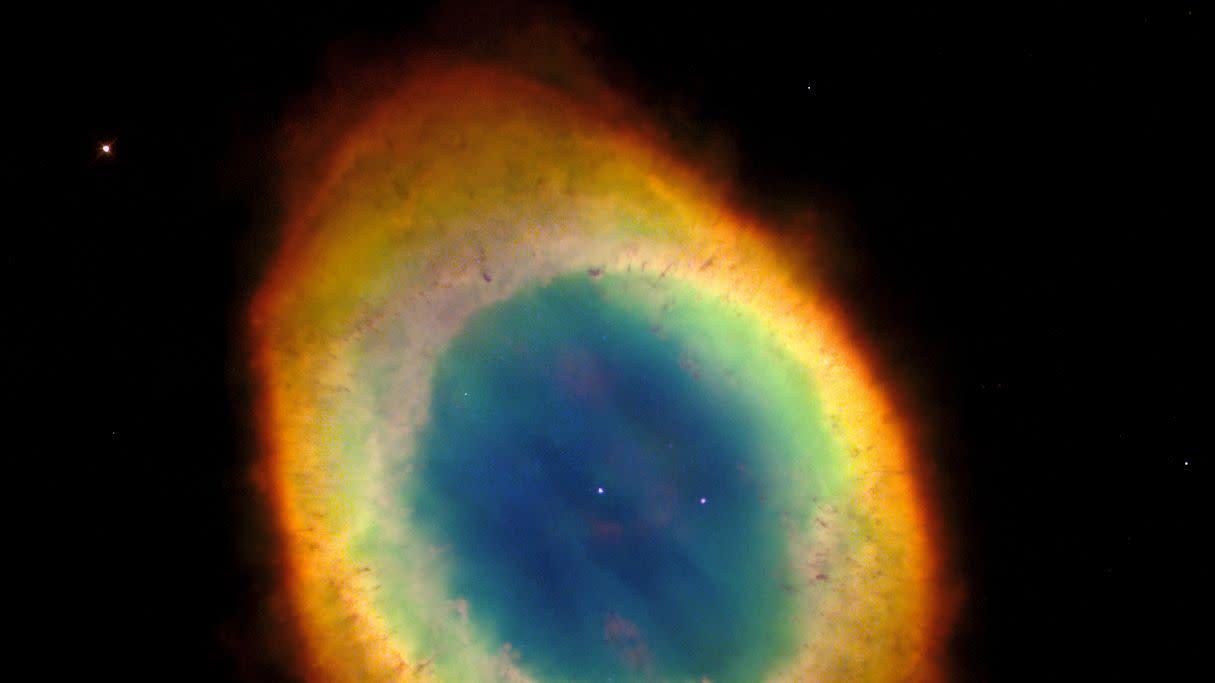Space Detectives Finally Solved the Case of the Missing Sulfur in Dying Stars

Planetary nebulae (PN), which have nothing to do with planets, should contain more sulfur that the seem to. This strange absence has created what astrophysicists call a “sulfur anomaly.”
Now, a new study says that the answer to this anomaly was hiding in plain sight, and that the combination of higher-resolution spectra data and a superior PN metallicity indicator (argon) effectively erase it completely.
The results show that, sometimes, mysteries can be solved by simply obtaining better data.
Exploring deep space means navigating a frustrating minefield of scientific mysteries. What happens inside a black holes? Don’t know. Where is all the dark energy that makes up 68 percent of the universe? Couldn’t tell ya. Why is there more matter than antimatter in general? Honestly, no clue. So, it’s always a good day when one of the universe’s many, many mysteries gets cleared up. And that brings us to planetary nebulae and their perplexing “sulfur anomaly.”
The term “planetary nebulae,” or PNs for short, is actually a misnomer, as these clouds of gas and dust have nothing to do with planets (William Herschel named them that in 1785 due to their round, planet-like shape). Instead, these nebulae are actually the cast-off layers of a dying star as it transitions into a white dwarf. Although long-lived by human standards, PNs exist for only a few tens of thousands of years—a blink of an eye compared to the billions of years the stars that create them likely live.
While scientists have a good handle on what PNs are, their composition has been a bit of mystery—chiefly because these clouds should be filled with more sulfur than they are. Sulfur is an “α-element,” and should be produced in similar measure to other elements such as oxygen, neon, argon, and chlorine. But previous studies of the low- to intermediate-mass stars that create PNs exhibit low sulfur levels. So... what gives?
Two scientists from the University of Hong Kong set out to finally answer this foul-smelling conundrum. In a new paper published in The Astrophysical Journal Letters earlier this month, Shuyu Tan and Quentin Parker detail how they used an “exceptional high signal to noise (S/N) optical spectra” on around 130 PNs in the center of the Milky Way, which were observed using the Very Large Telescope in Chile.
Because of limited background noise, spectra features were particularly detailed. However, the team made one crucial decision that finally solved this mystery—they used argon as a base metallicity comparator rather than oxygen, which proved a better match when searching for the missing sulfur.
The results of clearer data and swapping in argon effectively dispelled the “sulfur anomaly”—in other words, there was never an anomaly in the first place. This discovery disproves previous theories trying to explain this lack of sulfur in PNs.
“For the first time in PNs we show sulfur α-element lockstep with both oxygen and argon,” the paper reads. “We dispel hypotheses that the anomaly originates from underestimation of higher sulfur ionization stages.”
It may not be an answer to one of the universe’s biggest mysteries, but when it comes to understanding deep space, it always feels good to know a little more than you did before.
You Might Also Like

